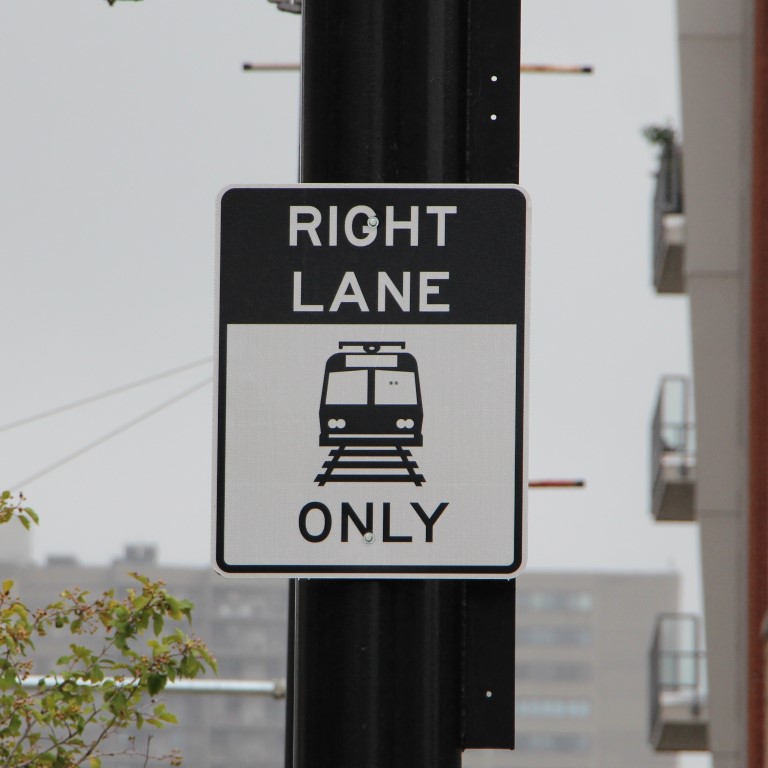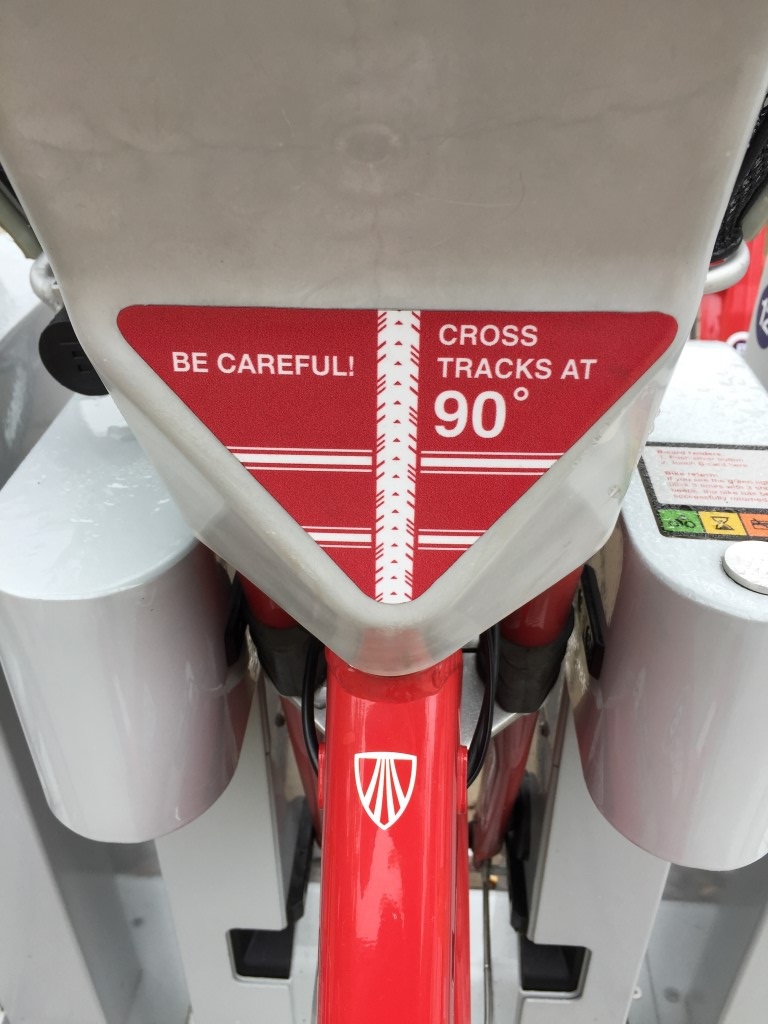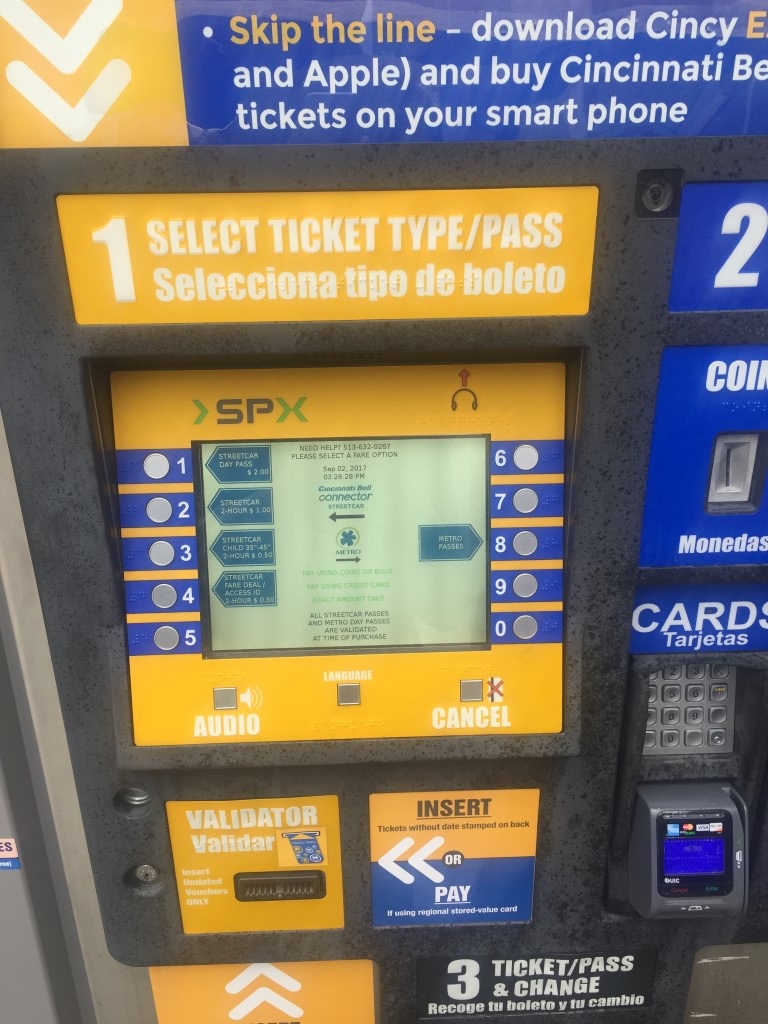My husband and I are on a little Ohio mini-vacation, and part of that included an afternoon riding around and exploring the one-year-old Cincinnati Streetcar!
I had followed along online with the construction of this one pretty closely, and I was really excited to check it out. It runs in mixed traffic for almost the entire route, and is a big shifted figure-eight loop. The stops are all-door boarding and tickets are bought at the stations. It's $1 for a 2-hour pass, and $2 for an all-day pass. The trains are the same CAF Urbos3 models that Kansas City runs, and I loved them there, too! CAF makes 5, 7, and 9 module variants of this same LRV. I like them as a close second to the FLEXITY Freedom model we're getting for ION. Annunciations are perfectly clear and there is a different chime for everything!
Frequencies were a bit erratic, and didn't seem to match up with the displays in the stations at all. From the various rides we took, watching over the driver's shoulder, trains were either very early or very late (from the "Adherence" monitor). There are a bunch of unique LED signs that illuminate for traffic before train movements begin at key intersections - I really liked this. The tracks shift from left to right seemingly at random, making big S-curves across all the lanes of traffic. It's very smooth and quiet, and doesn't use track lubricators, which surprised me!
My favourite thing was that the drivers were giving spiels along the way, with facts about the system. When we went by the Maintenance Facility, he went on to talk about the OCS voltage, how many trains they have, etc. - he either did that all the time, or just for me, because he noticed my ION/LRV pictogram T-shirt.
Here are some photos.


Here is the tram pictogram they use here.

One of the sections where the trains snake from one side to another. Traffic gets a red during this.

I like how their bikeshare bikes (Trek!!) have suggestions for how to stay safe on the tracks!

Here's what the TVM's look like.
I had followed along online with the construction of this one pretty closely, and I was really excited to check it out. It runs in mixed traffic for almost the entire route, and is a big shifted figure-eight loop. The stops are all-door boarding and tickets are bought at the stations. It's $1 for a 2-hour pass, and $2 for an all-day pass. The trains are the same CAF Urbos3 models that Kansas City runs, and I loved them there, too! CAF makes 5, 7, and 9 module variants of this same LRV. I like them as a close second to the FLEXITY Freedom model we're getting for ION. Annunciations are perfectly clear and there is a different chime for everything!
Frequencies were a bit erratic, and didn't seem to match up with the displays in the stations at all. From the various rides we took, watching over the driver's shoulder, trains were either very early or very late (from the "Adherence" monitor). There are a bunch of unique LED signs that illuminate for traffic before train movements begin at key intersections - I really liked this. The tracks shift from left to right seemingly at random, making big S-curves across all the lanes of traffic. It's very smooth and quiet, and doesn't use track lubricators, which surprised me!
My favourite thing was that the drivers were giving spiels along the way, with facts about the system. When we went by the Maintenance Facility, he went on to talk about the OCS voltage, how many trains they have, etc. - he either did that all the time, or just for me, because he noticed my ION/LRV pictogram T-shirt.

Here are some photos.
Here is the tram pictogram they use here.
One of the sections where the trains snake from one side to another. Traffic gets a red during this.
I like how their bikeshare bikes (Trek!!) have suggestions for how to stay safe on the tracks!
Here's what the TVM's look like.




